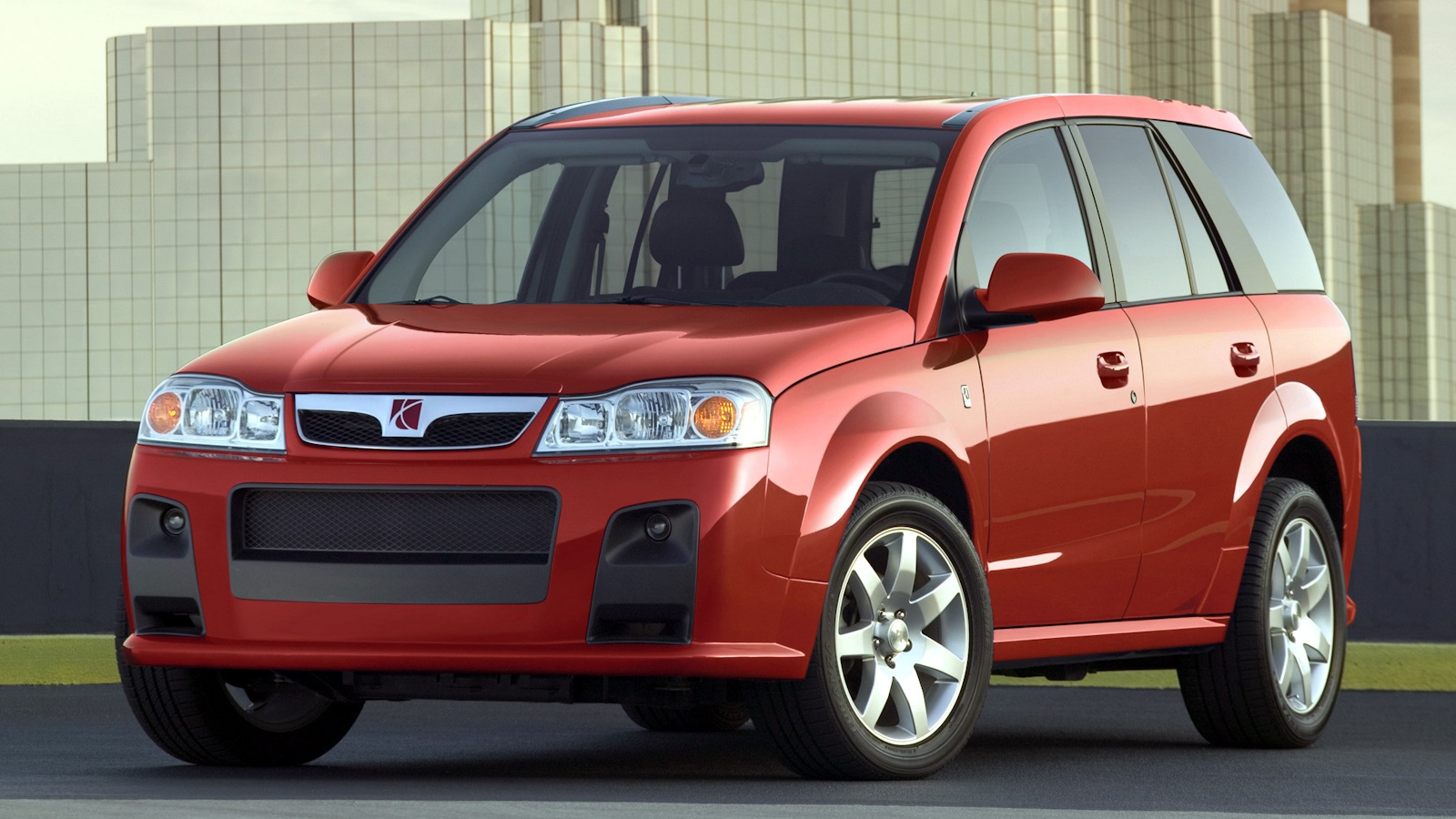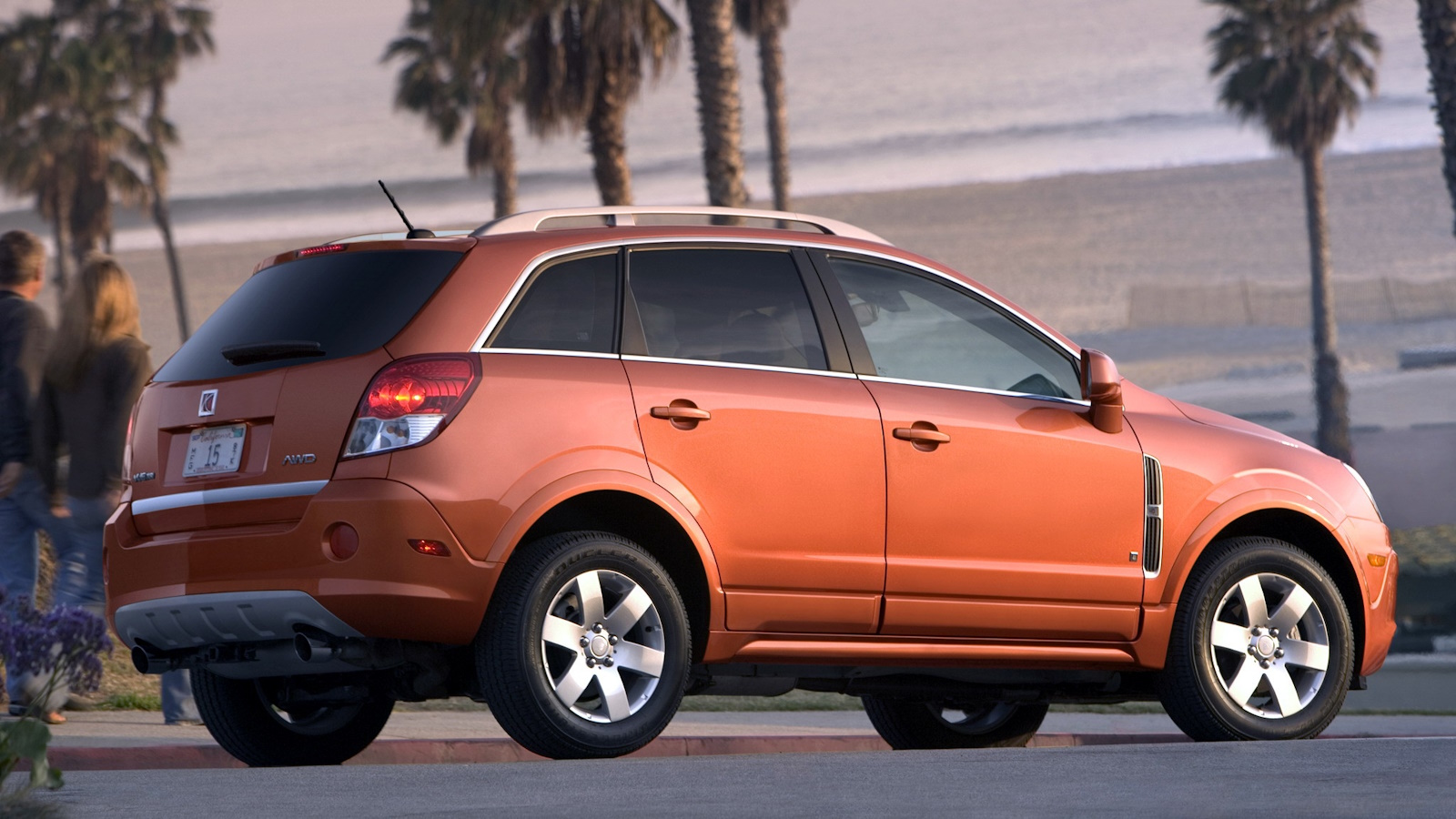
[ad_1]
While few cars get to live twice, the vast majority that do so end up going down as icons. The B13 Nissan Sentra gained a second chance in Mexico, the Hillman Hunter became Iran’s Paykan, and license-built examples of the Ford Cortina were the launchpad for a little company you might know as Hyundai Motors. Weirdly, the second-generation Saturn Vue also got a second chance, but instead of putting emerging markets on wheels or launching an industry titan, it simply tried to keep itself afloat. Welcome back to GM Hit or Miss, where we sift through the sands of GM’s pre-bankruptcy product planning to separate the success stories from cars that didn’t meet their marks.

![]()
In the beginning, there was this car company called Saturn that GM had absolutely no idea what to do with. Huge investment and vast cultural differences allegedly sowed resentment among other GM divisions, and the great Saturn experiment was left adrift somewhere in the ether of bureaucracy. While Saturn didn’t receive any truly unique products after the S-series compacts, a slew of shared-platform cars started trickling in around the dawn of the new millennium. The L-series midsizer was a re-worked Opel Vectra, the Ion shared its bones with the Chevrolet Cobalt, and the Vue was a compact crossover with an architecture eventually shared with the Chevrolet Equinox.

The first-generation Vue was a great idea with some teething pains — it was a plastic-paneled competitor to the Ford Escape that launched with an unusual powertrain lineup. The 2.2-liter L61 Ecotec four-cylinder engine had guts comparable to jellyfish, and the optional V6 was an insane for no good reason 54-degree three-liter unit borrowed from Opel. While the four-cylinder would eventually get you where you needed to go so long as it was paired with a manual gearbox, the automatic option was an early continuously variable transmission that was seemingly never taught reliability. Numerous NHTSA complaints exist for this transmission (look for ‘3’ or ‘4’ as the sixth VIN digit), many of which cite erratic behavior and high replacement costs.

Things got better later in the production run, when a Honda J-series V6 was swapped in place of the 54-degree weirdo, the continuously variable transmission was dropped from four-cylinder models, and a hybrid powertrain was offered. However, just a few short years after GM rectified the Vue’s initial problems, it was time to replace the compact crossover with a new one. As you’d probably expect, GM did so in the laziest way possible.

Remember that Saturn L-series I glossed over earlier? It was a reworked Opel, and GM’s plan for Saturn in the late-aughts was to sneakily disguise Opel products as Saturn’s home cooking, a la steamed hams. The Opel Astra became the Saturn Astra, the Saturn Aura rode on the same platform that underpinned the Opel Vectra, and the second-generation Saturn Vue was a hastily-rebadged Opel Antara. The what?

Yeah, in 2006, Opel launched its own Theta platform crossover that shared relatively little with common American fare like the Chevrolet Equinox, mostly because the Chevrolet Equinox sucked. It got curvy new sheetmetal, a much nicer cabin, some semblance of interior technology, and substantial re-tuning for the needs of Europe. It made an excellent first impression, and it needed to. Despite curb appeal, the second-generation Saturn Vue had some deficiencies.

In 2007, Car And Driver tested a 2008 Vue XR AWD with the V6 engine and recorded an actual curb weight of 4,146 pounds. I’ll give you a second to pick your jaw up from the floor. Fuel economy? I’ll let Car And Driver explain: “Saturn’s 2008 EPA numbers are just 16/22, and in our hands the Vue returned just 15 mpg, which is worse than the 21 mpg we got in the Honda-powered Vue V-6.” So, the Vue wasn’t very efficient or very light, but at least it was practical, right? Well, it would’ve been if the compact crossover class hadn’t just moved up in size. Compared to a 2008 Toyota RAV4, the Vue sported seven fewer cubic feet of cargo space behind the second row seat, and compared to a 2008 Honda CR-V, the Saturn was at a 6.7 cubic-foot disadvantage.

So, the second-generation Vue wasn’t efficient, nor was it competitive on space. Did it do anything well aside from look pretty? Why yes, it was surprisingly good to drive. Smooth, quiet, and with a perfectly firm suspension calibration, the Vue succeeded out on the open road, when its heft and refinement set it apart from its American competition. As Car And Driver put it, “the Vue now behaves as if it were competing against BMW. It’s not, but thanks anyway, Opel.” Acceleration with the top-spec 3.6-liter quad-cam V6 was also solid, even if reliability left something to be desired. General Motors has a TSB out for rod knock on this engine, so that’s confidence-inspiring.

Other powertrain options included a 169-horsepower 2.4-liter four-cylinder engine, a 222-horsepower 3.5-liter pushrod V6, and a 172-horsepower 2.4-liter four-cylinder series hybrid, but the quad-cam V6 was the real headline-grabber. Sure, the second-generation Saturn Vue wasn’t the fastest or most practical compact crossover on the road, but it was the right sort of car for a discerning customer willing to overlook practicality and fuel economy. It was also a victim of terrible timing.
In addition to the launch of the Saturn Vue, something else happened to General Motors in 2008: The whole company filed for Chapter 11. The global economy had just suffered a harder breakdown than anything Job For A Cowboy could dream of concocting, and America’s largest automaker suddenly was unable to fulfil its liabilities. NBC News reported that as part of a bailout agreement, GM had to cull four U.S.-market brands from its portfolio, and Saturn didn’t make the cut. In 2009, Autoblog reported that the planned Vue Two-Mode Hybrid was canned. After the 2010 model year, Saturn shut its doors for good, and that should’ve been the end of the Vue’s story. Except it wasn’t.

Look, if you had a fully-homologated crossover SUV and an assembly line in Mexico all tooled up for production, you probably wouldn’t want to kill it after just three model years either. However, Chevrolet had the Equinox, GMC had the Terrain, Cadillac had the SRX, and Buick was about to get the smaller, more urban Encore. There was no showroom that the Vue could cleverly hide in, but then GM had a brainwave — what if it wasn’t sold to retail customers at all? Yes, the Vue would return as a fleet-only vehicle, destined for use by holidaymakers and wearing the Chevrolet Captiva Sport nameplate.
The crazy part of all this is that it sort-of worked. Chevrolet sold nearly 130,000 Captiva Sports to various fleets in America, leaving the Equinox nameplate for retail buyers and juicing the last out of Saturn. In 2014, GM killed the Captiva Sport, and the second-generation Saturn Vue was finally dead, but not before GM pulled a move that would confuse Autozone employees for years to come.

The second-generation Saturn Vue had some positive traits, but it was also a miss in almost every conceivable way. From terrible timing to subpar space efficiency to a gargantuan curb weight, its misses tally higher than its hits, and it’s looked at today with an air of “oh yeah, that existed.” While it’s generally true that it’s hard to keep a good car down, it’s also hard to keep an uncompetitive car up. Still, if anyone would attempt the latter, it would have to be General Motors, right?
(Photo credits: Saturn, Opel, Chevrolet)
Support our mission of championing car culture by becoming an Official Autopian Member.

Got a hot tip? Send it to us here. Or check out the stories on our homepage.
[ad_2]